By Rebecca Schmid
Hillary Hahn’s taste for the unconventional has in recent years taken her career onto a trajectory unlike that of most violin prodigies. Last October, she appeared on NPR’s Tiny Desk Concert Series improvising to traditional American melodies that inspired the works of Charles Ives, donning a fedora for the occasion. She maintains an active web presence, blogging and twittering about her life on the road, perplexing critics last year when she posted a Skype interview with a fish on YouTube.
Her latest project is a collaboration with the German master of the prepared piano, Volker Bertelmann (aka Hauschka). After playing together at the behest of folk singer Tom Brosseau two years ago in San Francisco, the duo began meeting regularly to improvise and ultimately decided to consolidate their endeavors on a recording with Deutsche Grammophon. The recently-released Silfra, named after an island outside Reykjavik that lies just between the European and American continents, is a collection of non-notated works documented at a studio in Iceland.
“We had a hunch,” Hahn said to the audience during a DG “Yellow Lounge “ concert at Berlin’s Club Asphalt on May 10. “We played, then we recorded just improvising together, and now we’re on tour to capture that spirit.” Their next stops include Los Angeles, Seattle, New York and Boston.
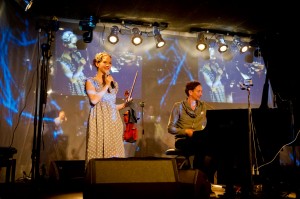
Hahn greets the audience at the DG Yellow Lounge © Stefan Höderath
The violinist, wearing a polka-dot dress and matching headpiece, seemed to revel in the freedom of entering the percussive and melodic layers of Haushka’s sound world. From my seat on a short wall at the far corner of the stage (the small basement venue was packed to the point that oxygen felt scarce), I spied wooden sticks, duct tape and tin foil inside the grand piano. Hahn responded with an intuitive, relaxed air to the whirring textures emanating from the instrument, from brief melodic gestures to full-thrust harmonics, yet her immaculate technique was always present. As she admits in an interview with local magazine concerti, she remains a perfectionist.
While several tracks on Silfra feature an atmospheric, minimalist blend that may not captivate those after ground-breaking developments in contemporary classical music, the album reveals a range of subtle ventures. One of the most effective works, at least for this listener, is fearlessly lyrical and neo-Romantic. “Ashes,” inspired by the eruption of Grimsvotn just a few days into recording, opens with a violin melody innocently inquiring into the underlying forces of nature against simple harmonic accompaniment. “No one walked outside. The birds went silent,” the musicians write in the liner notes. “The only sounds we heard were the one we made.”
The pieces all last under ten minutes with the exception of “Godot,” a slow exploration of Hauschka’s raw industrial sounds complimented by whinnying and other timbral exploration on the violin. The musicians write that the track is hypnotic in surround sound, which I haven’t been able to test yet. “Halo of Honey,” dedicated to Brosseau, traps the violin in a ghostly netherworld against crinkling and muted, distorted piano. The final track “Rift,” referring to the “deepness and isolation” of the island of Silfra, creates a sense of suspended time and nostalgia before launching into a mesmerizing minimalist tapestry. Hahn and Hauschka open the album with the last track they recorded, “Stillness,” which hovers in the upper registers of the violin and piano only to fleet by like an afterthought. Such free collaborations are rare in the classical music establishment, and while it may take an artist of Hahn’s stature to find the backing of a label such as Deutsche Grammophon, it could set a precedent for other soloists itching to explore another side of their creativity.
Mahler and Ravel with the Gewandhaus Orchester
A spring tour brought Riccardo Chailly and the Gewandhausorchester Leipzig to the Konzerthaus this week, a rare occasion to hear this fine orchestra in the German capital. For a moment I lost my orientation, as I’ve never heard a guest orchestra on the stage of the East Berlin hall, and the Leipzigers’ incisive string playing made me do a double-take. The program, seen May 15, opened with Ravel’s Piano Concerto in G-major featuring Hélène Grimaud, elegant as ever in velvet pants and a fitted silver jacket. The French pianist gave a poignant, introspective account of the nocturne-like passage that opens the middle Adagio movement while Chailly stood with his eyes closed on the podium. He subsequently summoned graceful entrances from the winds, particularly in the flute and English horn solos, while the piano continued as if trapped in its own world. Ravel’s brief use of bi-tonality in this movement is one of its most captivating moments, and Grimaud did not wander from a tender but focused pianissimo.
The opening Allegro, peppered with the quote of a falling melody from Gerschwin’s Rhapsody in Blue and jazz rhythms, received a vigorous if not muscular reading from the orchestra. Grimaud indulged in impressionist textures that, while evocative of the spirit in which Ravel synthesized the influences of his time into a personal blend, threatened to submerge the piano’s inner melodies in a bleeding wash of colors, such as through the passage of Spanish-inflected triolas in the section Meno vivo. While Grimaud’s ability to subsume emotion contributes strongly to her appeal, a bit more Sitzfleisch would have made the performance stronger. By contrast, she revealed a razor-sharp technique through the rapid chordal spans and arpeggiations of the final Presto, whose tempo Chailly kept particularly fleet. As a colleague noted, the brass could barely keep up speed.
Mahler’s Fourth Symphony, also in G-major, created a more serene atmosphere for the second half of the concert. Following the Mahlerthon that occupied programming during the composer’s centennial last season, this work feels as commonplace as a Mozart Symphony, yet it is hard to resist Mahler’s delicious harmonies and searing Lebensschmerz, particularly in the inner Adagio. The Gewandhausorchester plays with a directness that nevertheless conveyed a sense of inner torment beneath the vital sheen of sleigh bells and nods to Viennese Classicism in the opening movement. The strings produced an even, warm pianissimo.
Chailly created unbearable tension through his use of ritardando in the Ruhevoll (Poco adagio) movement, steering through tearful laughter before the gates opened for Das Himmlische Leben, a song from the Knaben Wunderhorn cycle. Soprano Christina Landshamer’s youthful, clear timbre captured the childish delight Mahler explicitly instructed, yet there was no sense of the subtle irony that emerges in a more dramatically nuanced performance. While she and Chailly gave clear emphasis to the final stanza’s critical line “Eleven thousand virgins/allow themselves to dance,” the delivery was almost too reverential, failing to provide a window into Mahler’s ambivalent spirituality. An elderly couple to my left was following the text with a nearly pious air, not sure whether to give in to the movement’s mordant satire.
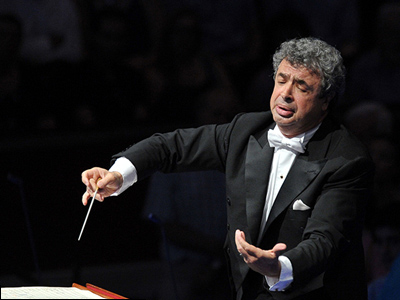
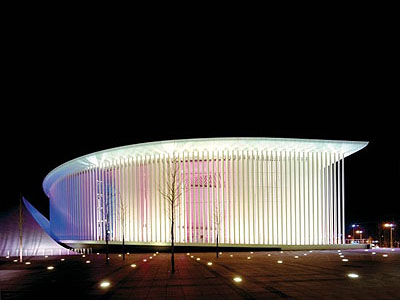
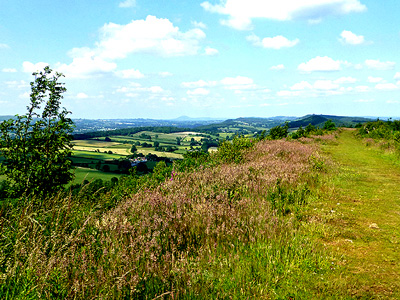
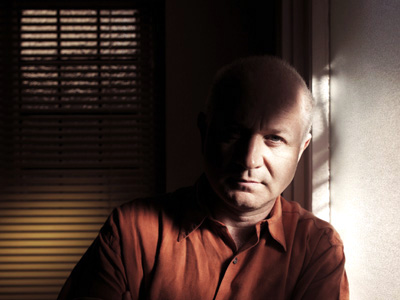
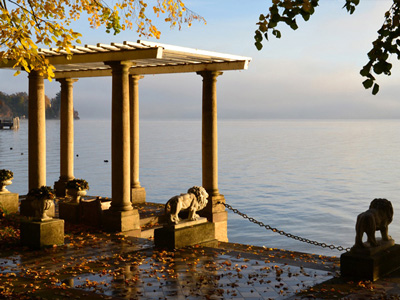

MatthiasCreutziger.jpg)
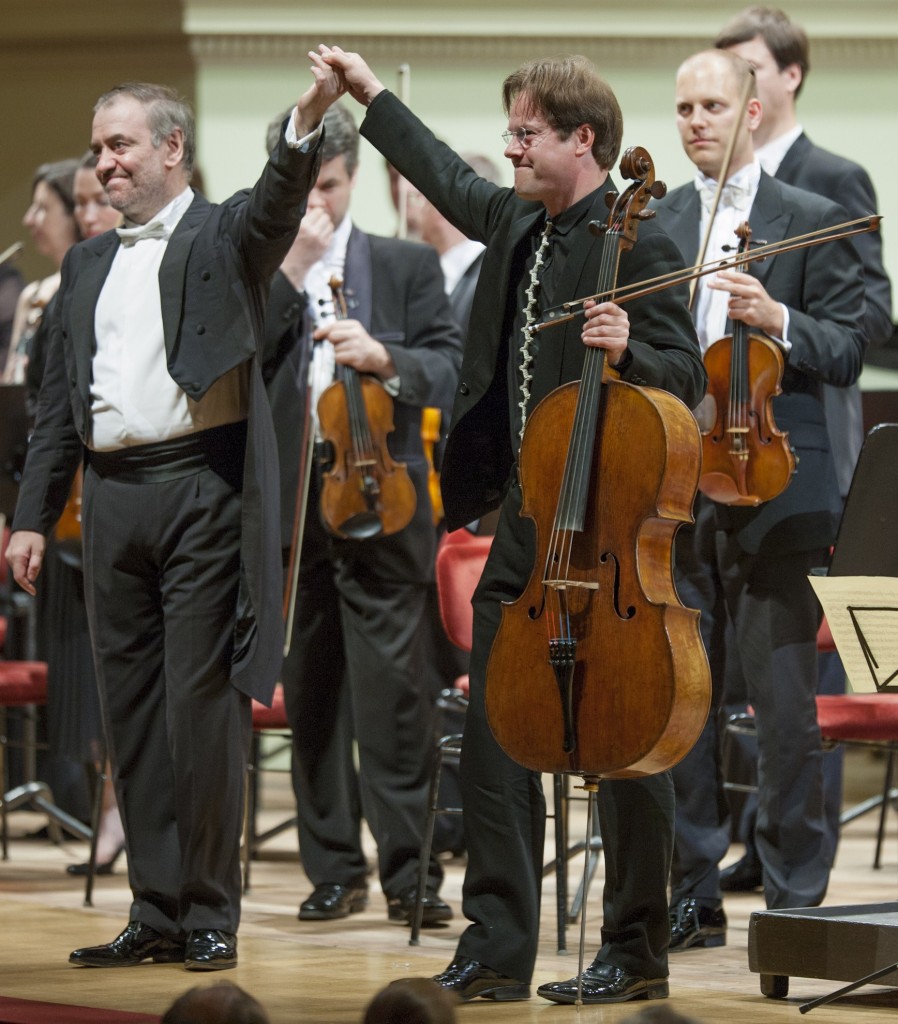

Carydis Woos Bamberg
Sunday, January 4th, 2015By ANDREW POWELL
Published: January 4, 2015
BAMBERG — When the Bamberger Symphoniker replaces its Chefdirigent next year, it could do worse than hiring Constantinos Carydis. The intense but discreet Athenian secured creative and technically superb playing in a Nordic and Impressionist program Nov. 29 here at the Joseph-Keilberth-Saal, confirming skills he has shown in Munich.
Choosing won’t be easy, and there is a preliminary question for this conservative north Bavarian town. Artistry or stability? Bamberg has enjoyed plenty of the latter in incumbent Jonathan Nott, who began in 2000. But unique interpretive approaches are another matter. The Lamborghini-driving British conductor has not forged a strong international profile for the orchestra — Edinburgh performances in 2011, for instance, lacked insight and vigor — and the claim of an “audible leap in quality” under his leadership versus the standards of predecessors Keilberth, Eugen Jochum and Horst Stein is hard to accept.
The job has attractions, not least the direct backing of the orchestra by the Free State of Bavaria, which encourages its deep tradition of touring. (Formed by German musicians expelled from Czechoslovakia, the Bamberger Symphoniker has given 6,500 concerts in 500 cities and still performs mostly away from home.) State broadcaster BR records the ensemble’s work and a few years ago the state helped pay for sound tweaks by Yasuhisa Toyota to its 1,380-seat hall. Built in 1993 with cheap materials and named after Bamberg’s grumpy first Chefdirigent, who held the post from 1950 to 1968, the Joseph-Keilberth-Saal sits on the Regnitz River below a onetime monastery. It probably is “Bavaria’s best concert hall” (another claim) if only because Nuremberg and Munich are so deficient in this regard. The sound is warm, balanced and natural, though high frequencies project relatively feebly.
Carydis, 40, definitely not to be confused with his vain compatriot Teodor Currentzis, 42, will be unlike anyone else the orchestra is considering and may or may not fit Bamberg’s concept of “maestro.” He is selective in the projects he takes on, i.e. not known for a heavy workload. For this debut he was without a jacket and looked disheveled. When in 2011 he was somewhat distressingly handed the Carlos Kleiber Prize — established on Kleiber’s 80th birthday and awarded only once to date, to Carydis — he disappeared for a year’s sabbatical. Not surprisingly he has never held a major music directorship and it is unclear whether he could commit to the scope of such a job. On the other hand, all that he does turns to musical gold. He is highly imaginative and perceptive, meticulous in preparation, equally accomplished in opera and symphonic music, adept in scores by such dissimilar composers as Shostakovich, Falla, Rimsky-Korsakov, Mozart and Offenbach. He is admired where he is best known, in Munich: tomorrow he will conduct a Brahms and Debussy concert, later this month a run of Don Giovanni, and during this summer’s Opernfestspiele a new staging of Pelléas et Mélisande.
This Bamberg concert followed runouts of the same program the previous two evenings in nearby Erlangen and Schweinfurt, part of the orchestra’s duty as a state ensemble. Refinement in the playing, no doubt lifted by repetition, came across immediately in Sibelius’s brute tone poem Tapiola (1926). The conductor reveled in its mostly quiet dynamics, lavishing attention on the woodwinds and propelling its long lines. Loud passages had considerable impact and the sense of purpose never flagged, though tension at times gave way to deathly stillness. In Prélude à l’après-midi d’un faune (1894), which followed, Carydis appeared to let flutist Daniela Koch pace and shape the music. She practiced the virtue of playing gently all through the concert, so that her instrument always sounded exquisite; in the Debussy she was guilefully supported by her woodwind colleagues and flattered by the satiny strings, but at its end it was the conductor’s collaboration she went out of her way to acknowledge.
Nielsen’s brooding nine-minute pastorale for orchestra Pan og Syrinx (1918) opened the second half of the concert as a preamble to Ravel’s Daphnis et Chloé Suites 1 and 2 (1911 and 1913). Like the Ravel, it relies on a sensuous string sound but places the interest in the woodwinds (clarinet and cor anglais personify the protagonists); agitated outbursts prop up the longer ruminative material. The Bamberg musicians achieved delicacy and much expressive character here, and in the Ravel, always with attention to mood. Carydis permitted no applause before Ravel’s opening Nocturne and looked irked that the Danse guerrière — brilliantly controlled, indeed electrifying — caused an eruption of applause before he could proceed into the Second Suite.
No decision date has been publicly set for the Bamberg appointment (in contrast to the Berlin Philharmonic job, for which a successor to a different Briton will be named in May, to start in 2018 after an equal 16-year tenure). If the new chief on the Regnitz can artistically stretch the musicians, as Carydis did on this visit, he or she will have been better chosen than any long-staying routinier.
Photo © Thomas Brill
Related posts:
Mélisande as Hotel Clerk
Wagner, Duke of Erl
Nézet-Séguin: Hit, Miss
Widmann’s Opera Babylon
Tutzing Returns to Brahms
Tags:Bamberg, Bamberg Symphony Orchestra, Bamberger Symphoniker, Commentary, Constantinos Carydis, Daniela Koch, Daphnis et Chloé, Debussy, Jonathan Nott, Joseph Keilberth, Nielsen, Pan og Syrinx, Prélude à l’après-midi d’un faune, Ravel, Review, Sibelius, Tapiola
Posted in Munich Times | Comments Closed